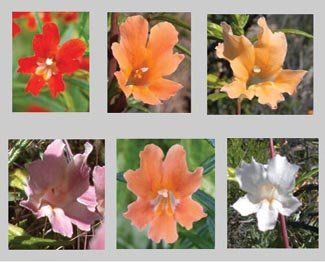In celebration of Native Plant Week earlier this month, let’s talk about using California natives in the garden. How do you pick the best plants for your situation, and what do they need to grow in your garden?
California is a vast domain when it comes to natural features and different soils. From hills to mountains to deserts to valleys and ocean bluffs, there are 6,000-plus plant species within our borders. Hundreds of these are showy and useful plants worthy of cultivation in our garden. Some, like ceanothus, have been cultivated for a century or more already, both here and abroad.
There are features of the California landscape that present a certain flavor and seasonal progression, quite distinct from that of the subtropics and year-round, moist forests that many traditional garden plants originally called home. Plants from hilly and mountainous areas are often found in rocky or sandy soils and require well-drained garden soils. Many plants of the chaparral have poor resistance to the root pathogens that thrive in a warm, moist soil and might not tolerate typical garden-style irrigation in the summer.
Matching or creating the right conditions is the key to growing California natives successfully. Planting on a raised mound or berm, for instance, is one way to drain water away from sensitive crowns. Knowing where in California a given native plant comes from can help you make the right decisions.
That being said, there are many natives with an amazingly broad tolerance of different conditions. Toyon, Heteromeles arbutifolia, grows in both sandy and clay soils. So does yarrow, Achillea millifolium, which is also a good cut flower. Carex grass and seaside daisy, Erigeron glaucus, also do well in most soils.
If you garden in clay soils, good native shrubs are western redbud, manzanita, spicebush, bush anemone, ceanothus, garrya, Pacific wax myrtle, western mock orange, blue elderberry, mahonia, California wild rose and snowberry. Native perennials for clay soil include coral bells, sticky monkey flower (another good cut flower), salvias, deer grass, rubus and Dutchman’s pipe vine.
Sandy conditions require California natives that are decidedly drought tolerant. You might already grow many of our manzanitas and ceanothus. But do you also have lupine, lavatera, coffeeberry, buckwheat, fuchsia-flowering gooseberry, purple sage, wallflower or the beautiful Douglas iris?
Then there are the folks who live in the shade. Native plants from canyons and riparian areas will do well in your garden. They require some summer watering, but that’s all. Native shrubs that tolerate bright shade are manzanita, spicebush, bush anemone, ceanothus, mahonia, California wax myrtle, any of the ribes, wild rose, snowberry and huckleberry. Perennials for color are columbine, Western bleeding heart, California fuchsia, Douglas iris and coral bells.
Wherever you garden, to provide food and nectar or berries for our winged friends, be sure to have some flowering currant, sticky monkey flower, coffeeberry, Salvia clevelandii, Dutchman’s pipe vine, wax myrtle, California fuchsia, California aster or seaside daisy.
Plant natives in the right conditions and you’ll enjoy them without much extra care.
Jan Nelson, a landscape designer and California certified nursery professional at Plant Works in Ben Lomond, will answer questions about gardening in the Santa Cruz Mountains. E-mail her at ja******@*ol.com, or visit her website, www.jannelsonlandscapedesign.com, to view past columns and pictures.











